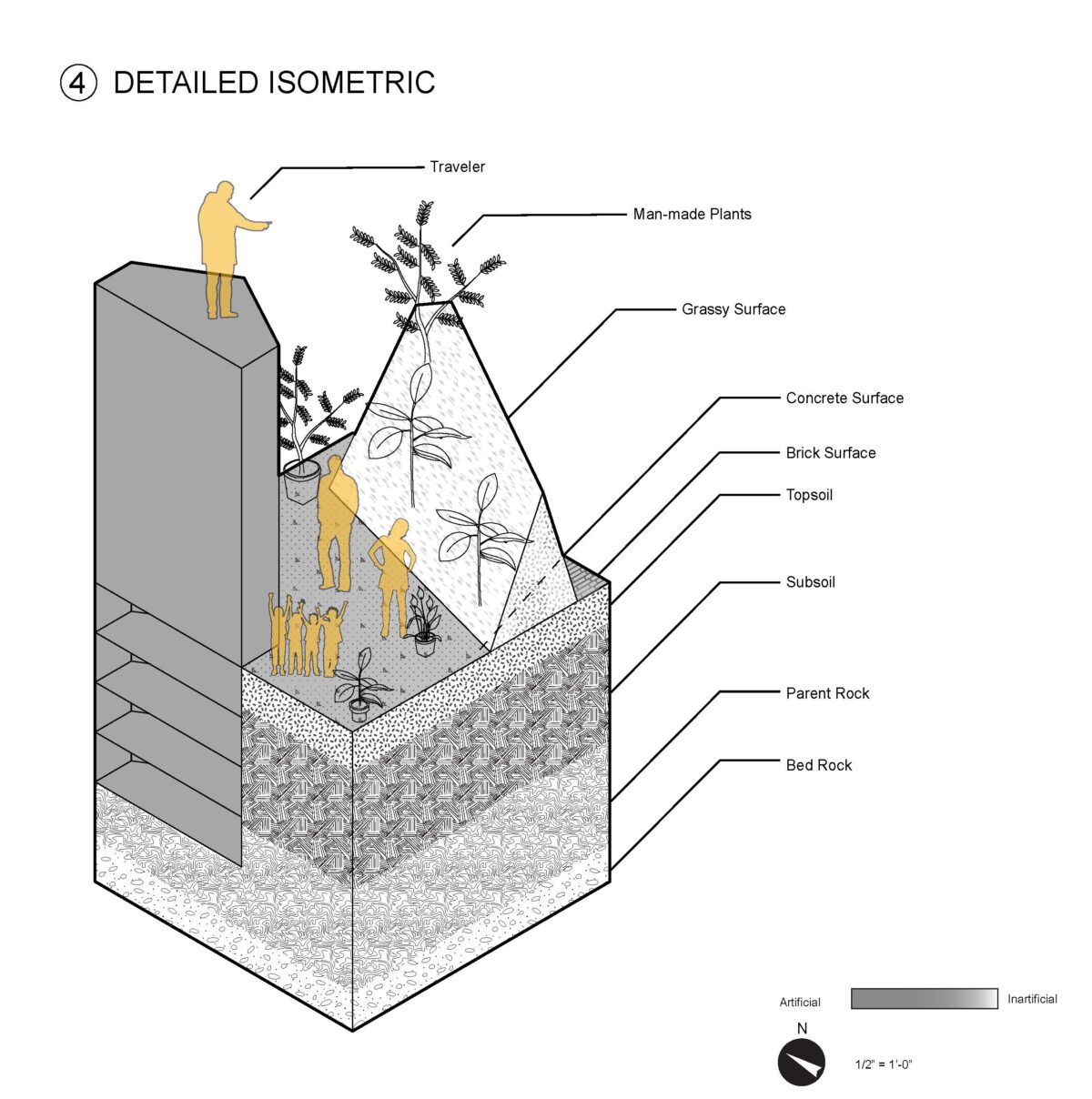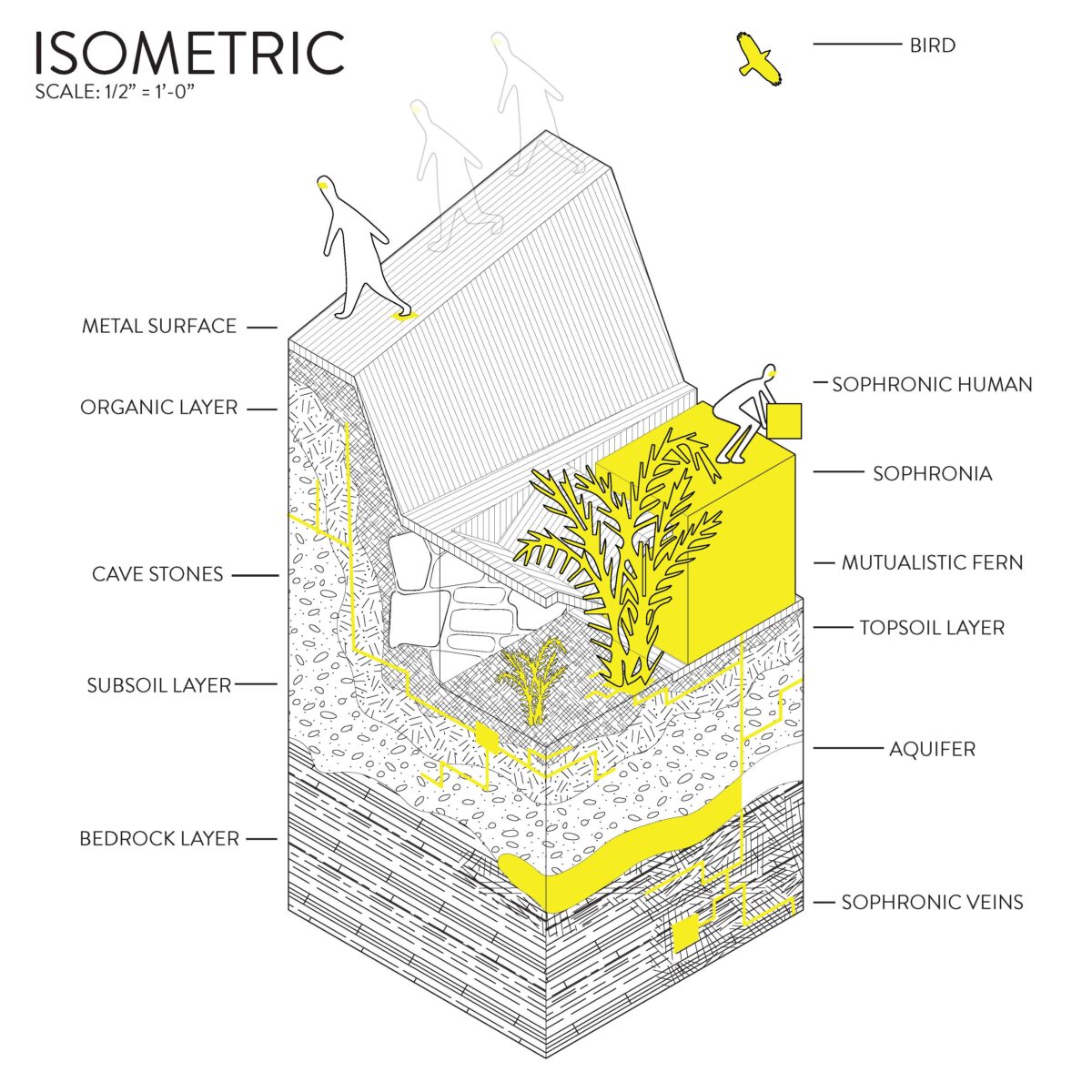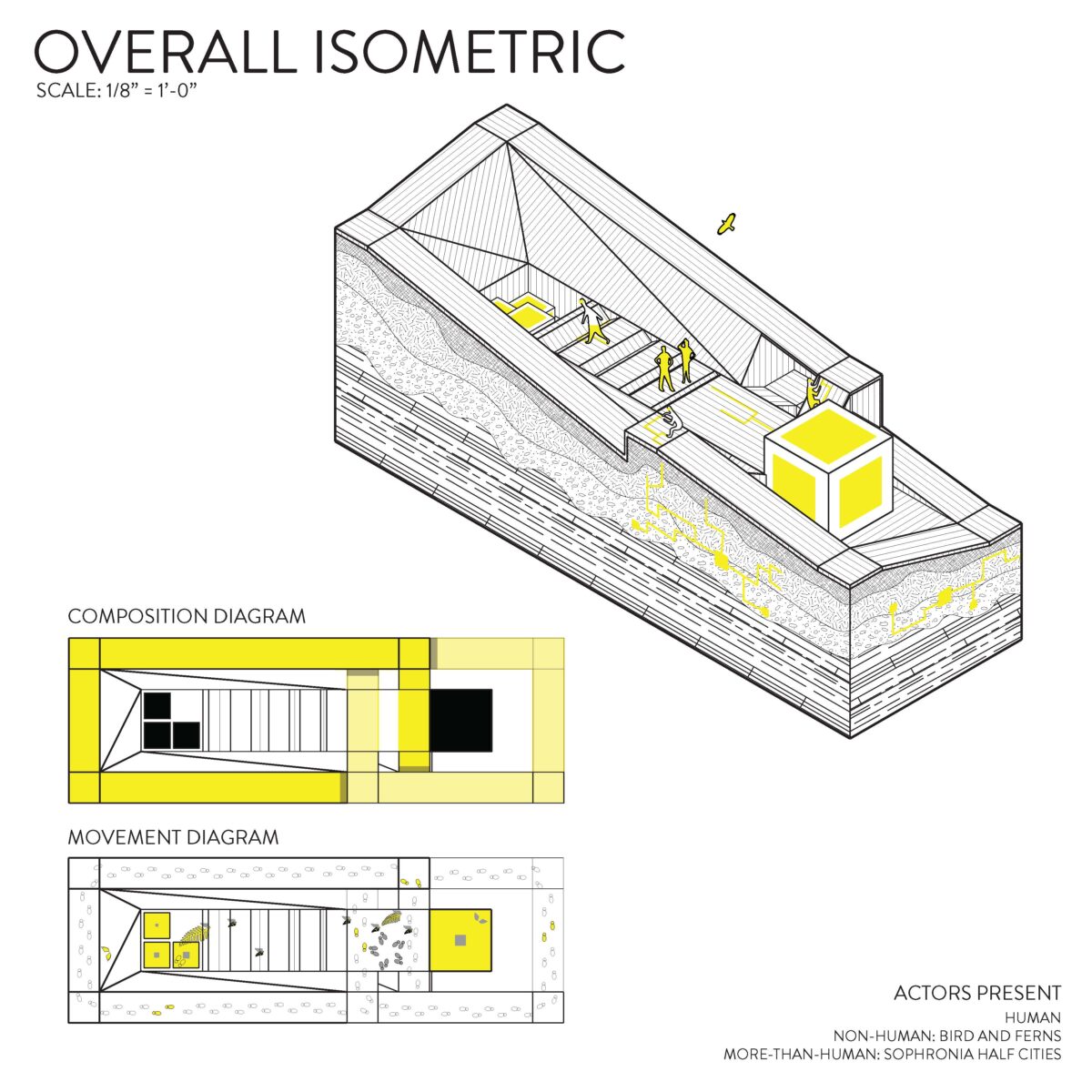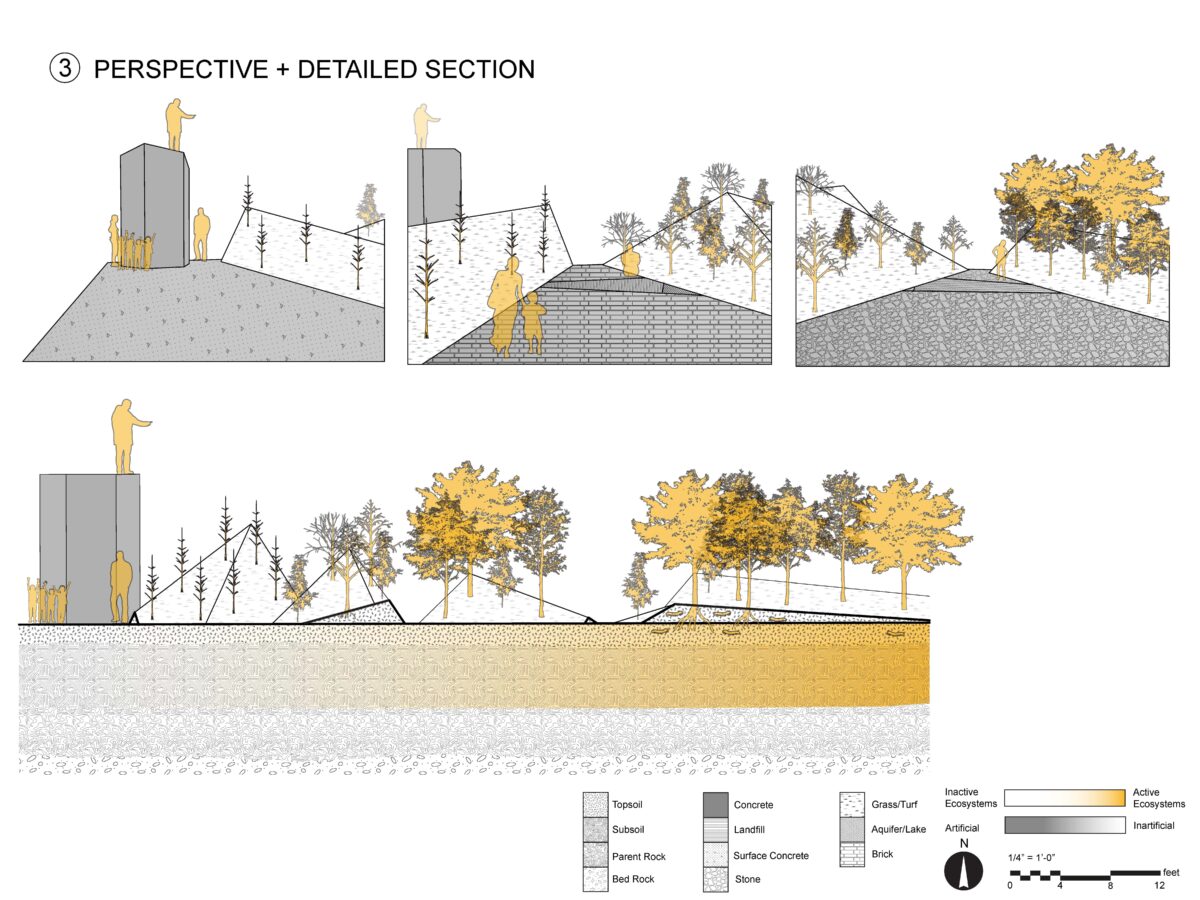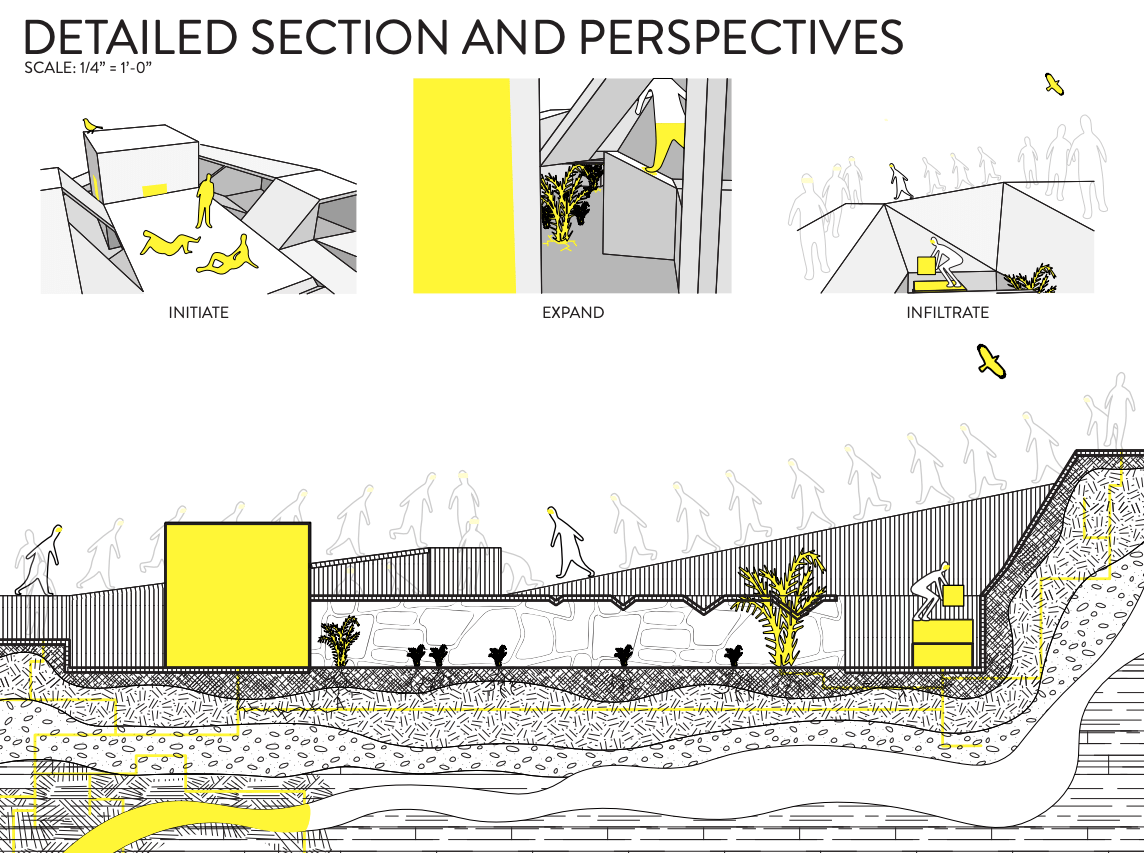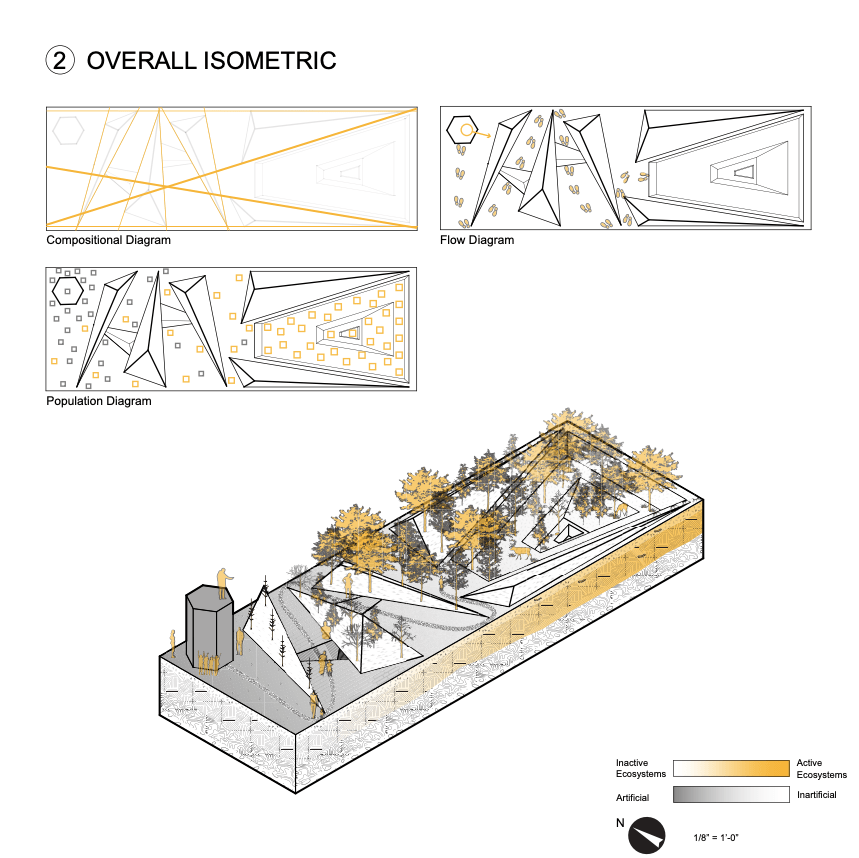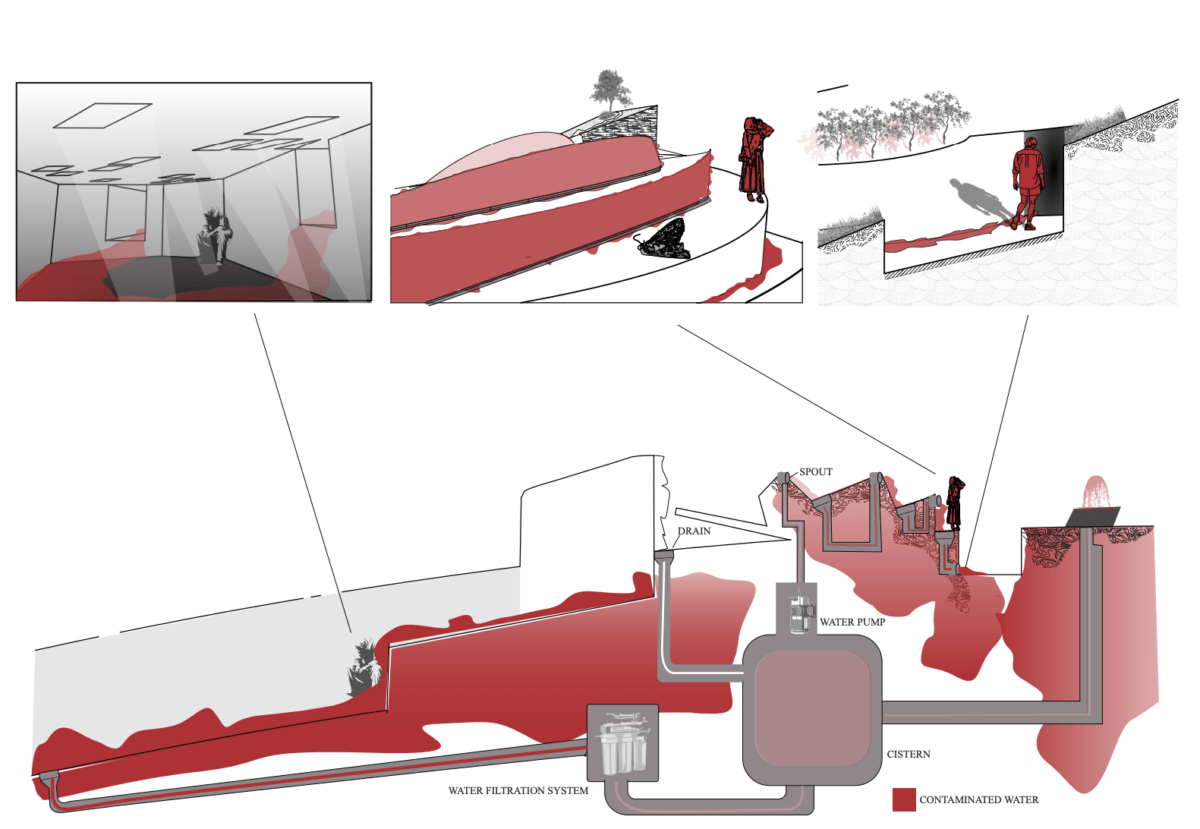Winter Quarter 2024 | Instructors: Catherine De Almeida, Vincent Javet
Students selected a story from Italo Calvino’s Invisible Cities and were asked to imagine their modeled surfaces as a narrative landscape that interprets some of the main concepts, elements, characteristics, essences, and spatial and character cues, and how this plays out in their landscape. We also asked them to define agents (human and/or more-than-human and/or non-human materials) and concepts and types of processes enacted by their agents in this imagined landscape.
Through this interpretation, we’ve encouraged students to think beyond the story, and explore other processes that might take place before, during, and/or after the moment of their model. We’ve pushed them to be imaginative, and in some cases, are suspending realism and leaning into the fantastical aspects of the Invisible Cities stories, including some of the darker aspects of the stories and the discomfort they might elicit. Given this, you will see a range of ideas and interpretations that toe the line between actual and imagined, and even verge on folklore at times. Our primary objective is to encourage them to explore spaces 3-dimensionally, and integrate narrative and story-telling in the conceptual and physical construction of their spaces.
Students have also been introduced to Rhino 3D for the first time, modeling their landscape surfaces and generating a series of drawings- plan, deep sections, and isometrics- with diagrams that describe their spaces, how they might change, how they are occupied, etc. You will also see that students were limited to only using black, gray, and white in their drawings – linework, hatches, textures, etc. – and 1 color, to create emphasis.
